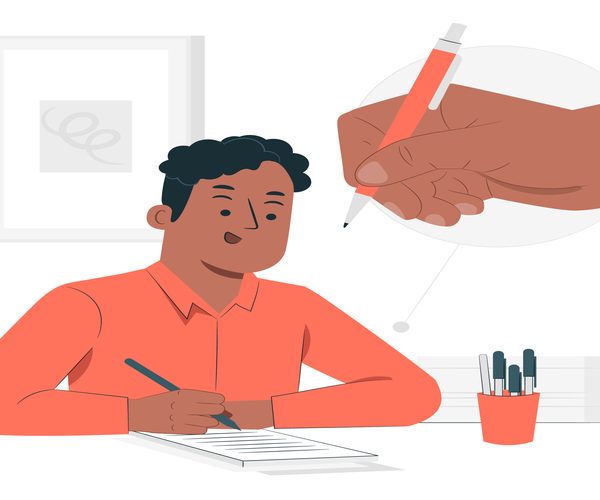How to get band 9 in IELTS writing task 1? Many aspirants have this doubt in their minds but they don’t have the right plan. We are here discussing how to score band 9 in the IELTS writing task one and essay. Here we will provide a complete guide about the preparation, exam pattern and how to solve the questions in writing task 1. So, let’s begin!
IELTS Writing Task 1
IELTS writing task one constitutes thirty third of the full total of IELTS writing. The best example of that IELTS writing task one is estimated square criterion – Task performance, vocabulary, grammatical preciseness, coherence and cohesion. Whereas the IELTS writing task one deals with infographic-related questions, the IELTS general writing task one has a section of letter writing.
Each IELTS academic and general writing task has one rightful criterion marked on a record of zero – nine. For IELTS writing task one, aspirants ought to compose a summary on the analysis of chart, bar graph, line graph or chart.
The main purpose of the IELTS writing task 1 is to survey the understanding and logical skills of the aspirants who train up to check abroad. Now, institutes abroad have a substantial way of teaching that isn’t cliche. The examiners expect the aspirants to clearly analyse graphs, tables, diagrams, bars, flow charts, etc
Also Read: What is Linking Words? How to Use Linking Words in IELTS?
IELTS General Writing Task 1
| Task type and format | In Task 1, test takers are asked to acknowledge a circumstance, for instance, by composing a letter wishing evidence or illustrating a circumstance. |
| Task focus | This task evaluates the proficiency to develop English letter-writing rules (i.e. what order to put knowledge in, what style to manipulate, how to begin and complete a letter), to use terminology accurately and suitably and to organise and link knowledge coherently and cohesively. |
| No. of questions | 1 |
How to Get Band 9 in IELTS in General Writing Task 1?
#Recognize the kind of letter you are being expected to compose – Formal, Semi-formal & Informal.
#Recognise the objective of the letter
#Open and finish off the letter correctly. Do this on the kind and objective of the letter
#Commence the letter suitably
#Learn and adopt characteristic written words.
#Spell normally used phrases correctly
#Segregate your letter into passages.
The letter has four paragraphs
-Introduction
-Problem / Situation
-Outcome / Solution
-Conclusion
# Use precise writing
#Compose at least 150 words
#Comprise all three bulleted facts
#Complete it in time
#Examine category letters but don’t get by heart them
#Comprehend the scoring norms.
Types of Letters and How to Write Them?
| Style | Characteristics | Opening | Ending |
| Formal | To the person you have not encountered or the person whose name is unknown | Dear Sir/Madam | Yours faithfully, |
| Semi-Formal | To someone, you may or may not have encountered, but you know the person’s last name | Dear Mr/Miss Surname | Yours sincerely, |
| Informal | To someone, you know and have often met them, whose initial name you recognize | Dear Name, | Best regards,
Warm wishes, |
Also Read: IELTS Writing Task 1 Academic Topics 2021: A Complete Guide to Writing Preparation
IELTS Academic Writing Task 1
| Task type and format | In Task 1, test takers are asked to interpret some pictorial data (graph/table/chart/diagram) in their own phrases. They need to compose 150 words in approximately 20 minutes |
| Task focus | This task evaluates the proficiency to recognize the vastly crucial and related evidence and movements in a diagram, graph, map or chart, and to provide a well-organised synopsis of it using terminology accurately in an academic scheme. |
| No. of questions | 1 |
How to Get Band 9 in IELTS in Academic Writing Task 1?
#Read the title
You are required to halt and concentrate on the formulation of the headline to make certain that you will note the evidence accurately and in the exact decree. Occasionally, exam takers hurry into composing only to comprehend that they had misunderstood the title.
#Decide what are the central captions that you want to compose roughly or summarize in that diagram, table or any distinct visual that you are associating, inferring, observing.
#Give yourself assertions why those are the extensively significant ones and assist them with digits from the visual.
#Aim to specify categories of data, results, minimums, maxima, and structures.
#Plan your paragraphing, make a degree of keeping an introduction, and at least two body passages.
#Write an enormous introduction.
#The first, initial passage should be only one statement. Here, memorize the WHAT-WHERE-WHEN logic, the opening should say WHAT the diagram illustrates, as reasonably as WHERE and WHEN the evidence is put.
#In the beginning you can also compose your statement, just in case you don’t have time near the stop.
Types of Illustrations for Academic Task 1
Here are some examples of how you have open and close your writing.
| Illustrations | Introduction | Overview |
| Table | The table demonstrates business digits in Australia over a thirty-year duration from 1970 to 2000. | Overall, it can be plainly seen that the digits of people hired have heightened over the duration, whereas the jobless numbers have continued to be stable. |
| Chart | The chart correlates the number of automobiles that were prepared in France, Italy and Ireland over a time from 2000 to 2011. | In summary, Italy was the major creator of automobiles over this period, attended by France and Ireland. |
| Diagram | The illustration indicates how car components are composed. | It can be detected that there are four crucial phases to car manufacturing. To be particular, these are moulding, machining, assembling and cutting. |
| Process | The process implies how artificial fibres are generated. | It can certainly be detected that there are six degrees in the creation of cloth commencing with the raw substances and finishing off with the ultimate output. |
| Map | The maps illustrate modifications in an English Townley over a century from 1916 to 2016. | In overview, in one hundred years, the Townley has encountered crucial modifications modifying it from a minor agriculture town to an industrial city. |
| Graph | The plan illustrates data from France showing theatre attendance in major cities in 2014. | To summarise, it can be detected that the youthful age gangs frequent the theatre highest, whereas the aged population barely attend. |
| Two Charts | The pie charts imply the major power reserves used to produce energy in a city in New Zealand, while the chart indicates how much power was expanded by the population in 1998. | Overall, by noticing at the charts it can be detected that petroleum is used the vastly as a power citation in this city and that maximum energy is expected for household cooling. |
Also Read: IELTS Writing Task 1 Academic Topics 2021: Get Yourself into Practice Mode
IELTS Writing Task 1: Quick Tips
#Understand how the test is marked.
#Paraphrase the question.
#Write the overview.
#Support the main features.
#Check your work.
Conclusion
Hopefully, this article provided you with everything that you need to get a score because scoring a band 9 is a tough job and you should first be familiar with the test pattern and then the quick tips should be kept in mind while you are going for the examination because these tips are necessary and should be followed in sequence. If further any doubts please feel free to comment down in the comments section below.
Also Read: How to Write Flow Chart IELTS Writing Task 1? Things to Know about Task 1 Flow Chart











Thank you for providing this article, it was fabulously written and also it was very helpful and gave every small detail, what do you guys think about it?